The forces of electricity and magnetism have been known since time immemorial. The ancients knew of lightning and static as examples of electricity and naturally occurring samples of lodestones as an example of magnetism. For a very long time the two forces were considered totally separate. It was then discovered that magnetism was linked to electricity some way after all, A current in a wire attracts pieces of iron towards it, much like a magnet.
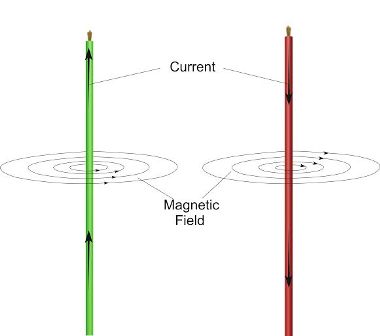
In 1831, Micheal Faraday showed that the converse was also true, that is a moving magnet can also produce electricity. Finally, in 1864 James Clerk Maxwell unified the two forces into one force : Electromagnetism. Electricity and Magnetism were really the same thing, just two aspects of one underlying force.
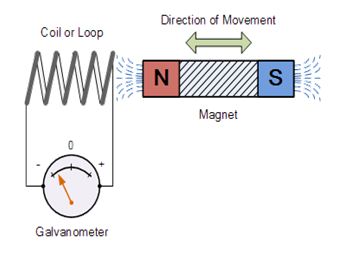
We all are familiar with electric monopoles, though we know them by their more common name: Electric charge. Electricity is carried by negative charge carriers called electrons. Similarly there are positively charged particles called protons. If we place two unlike charges together, they attract. If we place two like charges together, they repel.
We also have magnets everywhere around us. Magnets too have a north and south pole much like positive and negative charges (note that these names are arbitrary. we could call our negative charge as positive and the theory would be unchanged). So it follows that like an isolated positive charge we should have an isolated magnetic north charge right? or an isolated south charge?
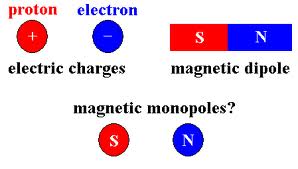
Except that in 200 years, we have never found such an isolated magnetic charge! If you cut a magnet into two, you get two magnets with their own north and south poles. Maybe we would get a single north and single south pole if we went small enough? Nope. We’ve gone down to the subatomic level. Even an electron has a north and south pole. In the language of physics, we say that while an electron is an electric monopole (only negative charge) it is still a magnetic dipole (has both north and south pole).
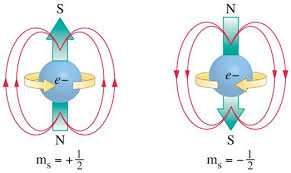
Why is this important? Why does it worry physicists? Why are we still looking for monopoles even though classical electrodynamics and quantum electrodynamics, which are the theories that explain electromagnetism and the macro and micro level respectively are among the most successful theories in physics we have? These theories account for virtually all phenomena in the universe to a very high degree of accuracy and nothing seems amiss.
And yet the search continues. What would we accomplish if we found a magnetic monopole? after all electric monopoles are nothing special.
I) The symmetry argument.
Physics gives great importance to symmetry. At first sight this may seem strange, as symmetry is something an architect or artist would worry about, not a physicist. However the argument that nature loves symmetry has been used to great effect in the past.
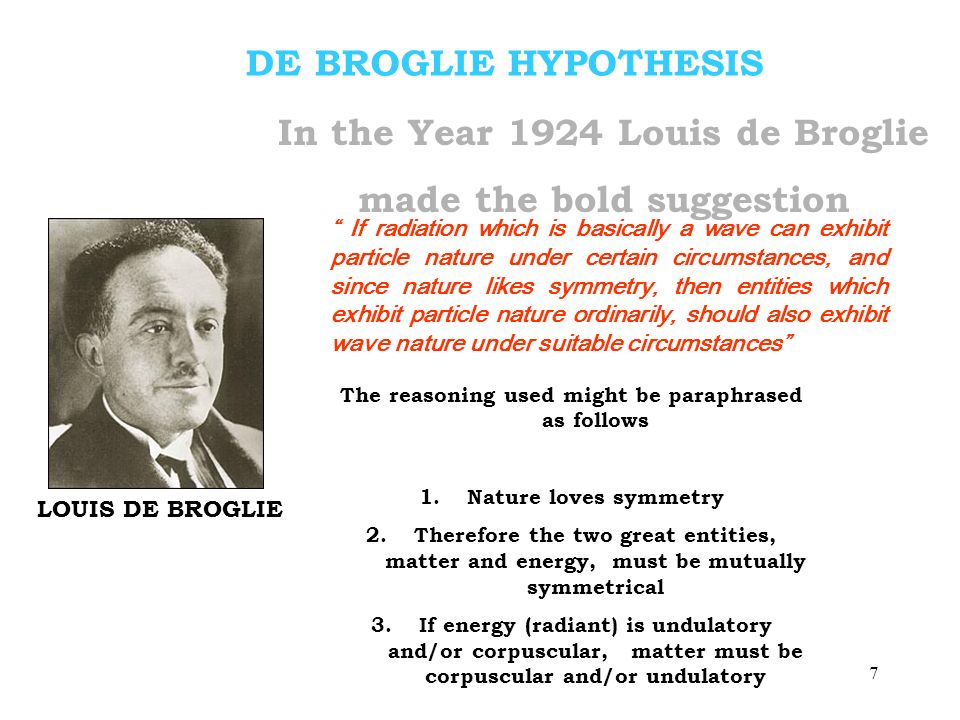
An example of a symmetric equation is y = x^2. Since x is squared, even if x is negative or positive the equation is unchanged. In nature most animals possess some type of symmetry. They might have bilateral symmetry (along a line, Like how the left half of our body mirrors the right half) . Some may have radial symmetry . Some shapes like snowflakes may have a special type of symmetry in which they look the same if rotated by 60 degrees.
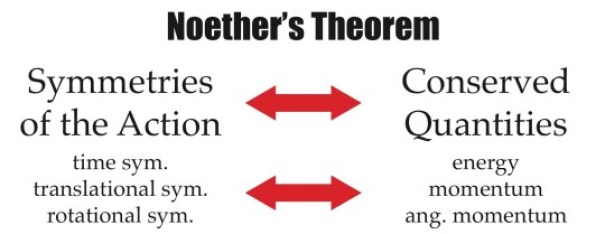
In physics, the biggest proof for nature’s inherent love for symmetry is perhaps Noether’s theorem. Emmy Noether in the 1900s gave us what is perhaps one of the most powerful laws in physics. Roughly stated:
Every conserved quantity is associated with a symmetry and vice versa.
What does this mean? Noether’s theorem allows you to find out a lot about a problem just by looking at it!
Noether’s theorem showed for example, That if you do an experiment today and do the same experiment tomorrow and get the same result, your answer did not change with time. Via Noethers theorem you can prove mathematically that any experiment that does not change with time (i.e Symmetric with time) involves conservation of energy!
Similarly, If you were to do your experiment in Bangalore today and did it in London tomorrow, provided you took precautions for the weather and other things, and got the same answer, it would prove that your experiment did not change with space (symmetric in space) and hence momentum is conserved. If you rotate your table to face east instead of north, your setup did not change with rotation and hence angular momentum is conserved!
These three results, Conservation of Energy, Conservation of Momentum and Conservation of Angular Momentum are results from Noether’s theorem. The theorem is valid everywhere and at all times, no matter whether you use a quantum theory or classical theory.
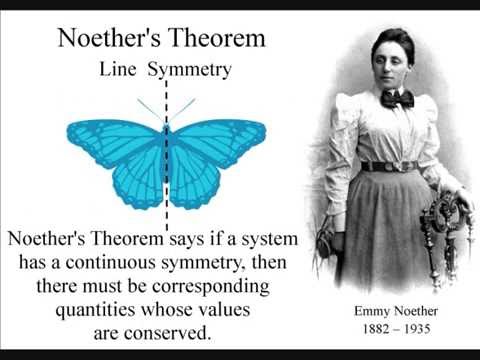
Are there other quantities that are conserved? Yes! Electric Charge comes to mind. The number of positive and negative charges all around us has to be equal otherwise things would blow up! However proving that there is a symmetry associated with conservation of charge is slightly more tricky, although we have done it.
When Maxwell wrote down his four laws, he included a law known as Gauss’ law for Magnetism which basically states that magnetic monopoles don’t exist. However, assuming magnetic monopoles do exist has a very interesting effect on the equations. They become more symmetric!
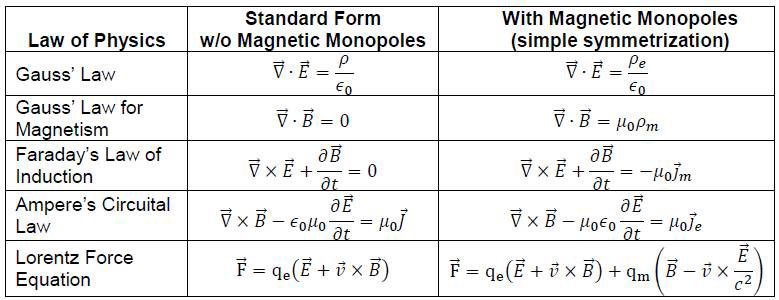
Currently with maxwell’s equations if we exchange electric fields for magnetic fields, the equations are unchanged. However we cannot change magnetic charges for electric charges because magnetic charges don’t exist!
Paul A.M Dirac proved that adding monopoles to the theory does not break the theory of electromagnetism at all, rather it makes it all the more elegant. This rarely happens with any theory, normally adding something results in the theory falling apart.
II) Monopoles can explain a lot about our universe.
a.) Monopoles can explain discrete charges in our universe.
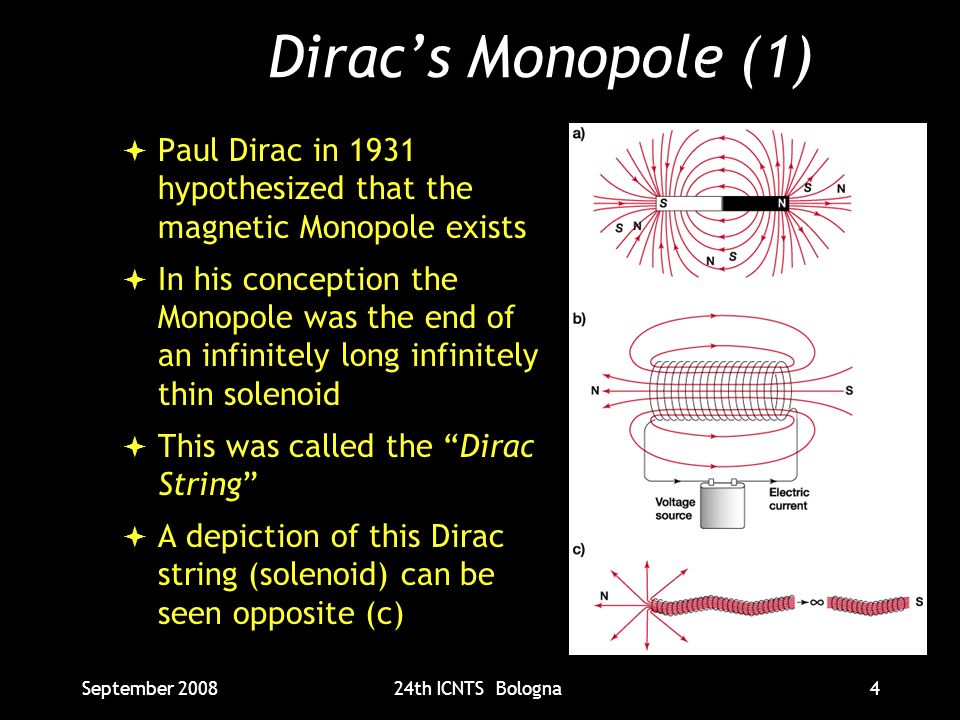
Paul Dirac showed that if even a single monopole existed in the whole universe, It would explain the quantization of charge. Electric charge as we know, comes in units. An electron carries e= -1.6 x 10^-19 C of charge and the proton carries an equal amount of positive charge. Moreover even other charged particles like Positrons, Antiprotons, muons etc have charges that are integer multiples of the basic amount of charge. You cannot have 1/2e of charge or any fraction. The minimum amount is e. The only exception to this rule are quarks which can have charges such that 2/3 e, but quarks always exist in pairs in such a way that the charges add up to e or some integer multiple of e.
Finding even one monopole would let us mathematically conclude that charges must be discrete and not continuous.
b.) Monopoles might confirm if protons decay.
One of the biggest unsolved mysteries in our universe today is the question of proton decay. You might have read that particles like the Higgs Boson decay in a fraction of a second into lighter particles. Because mass and energy are conserved in our universe, you can’t have a lighter particle decay into a heavier particle because that would involve creation of energy.
We already know that electrons can’t decay, because electrons are leptons. What is a lepton? suffice it to say that they are not made up of smaller particles, an electron is the smallest unit of negative charge and hence cannot decay into anything smaller. So the electron is stable. Unlike the electron, The proton is not the lightest positively charged particle. That honor goes to the positron. The proton is a hadron which is composed of 3 quarks so it must decay into something lighter.
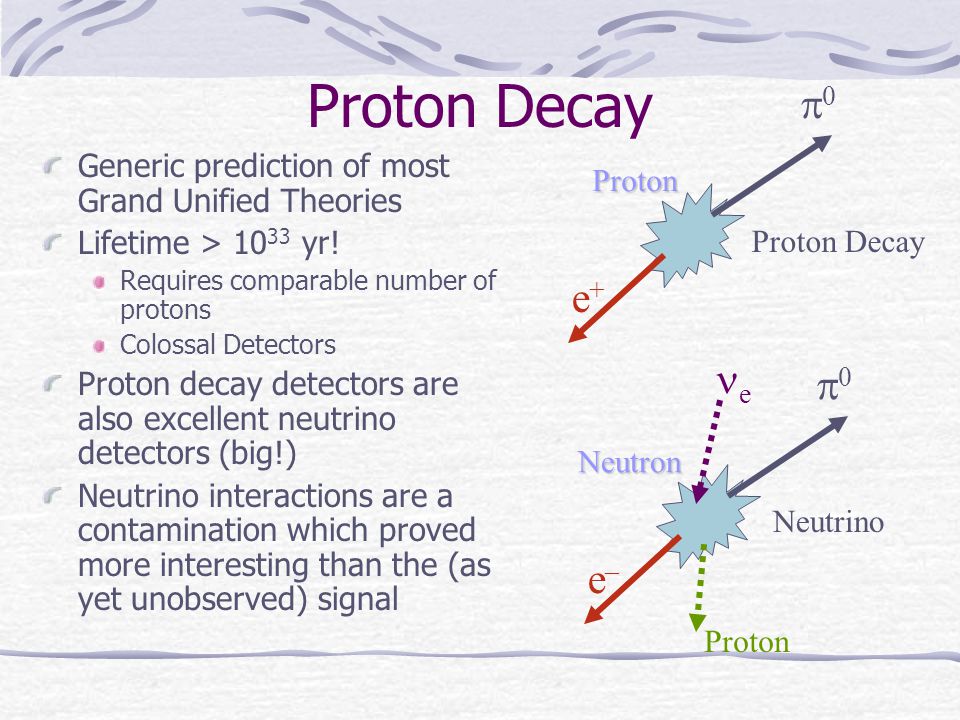
The third particle associated with atoms is the Neutron. Free Neutrons have been observed to decay in about 10 minutes. Even though the proton is very nearly the same mass as a neutron, we have never ever seen a proton decay. Infact, our experiments show the proton, if it decays at all, must have a half life longer than 10^34 years which is much longer than the age of the universe. But that doesn’t mean that no protons will decay till 10^34 years into the future, just that the odds of a proton decaying is very very low.
But even then, Out of a sample of billions and billions of protons, atleast one must decay because radioactive processes are random. A given proton may decay right now, or much later.
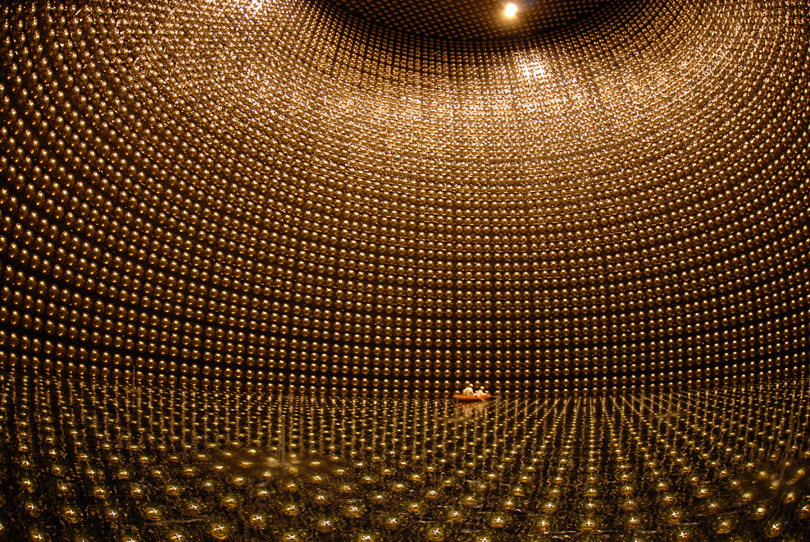
We have experimental facilities underground (So that they are shielded from radiation) to observe proton decay. The Super Kamiokande facility in Japan has 50,000 tons of ultra pure water and if even one of the protons in a water molecule decays , we will be able to sense it. Facilities such as the Super Kamiokande are primarily built for the detection of neutrinos, which is another open problem but they double up as proton decay detectors.
How do monopoles fit in? Several theories predict that a monopole could catalyze proton decay. Hence if we found a monopole, we would be able to confirm once and for all whether or not protons decay, and by studying the decay mechanism we could possibly predict how long it actually takes for it to happen.
c.) Monopoles could tell us which one of our GUTs is right!
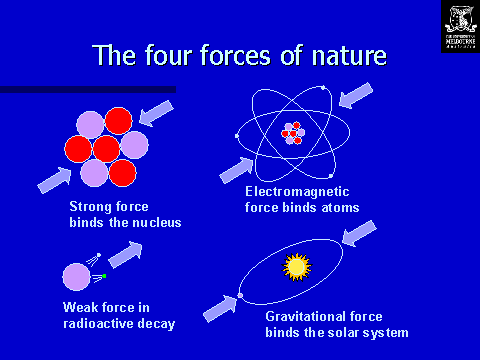
As explained above, physicists are always on the lookout for symmetries. We discovered that there are 4 fundamental forces in nature:
1.) Electromagnetism: The force responsible for magnets, charges and much of the everyday forces. It is pretty strong in magnitude (When a magnet lifts off a coin from the ground, it is acting against the gravitational force of the entire earth!).
2.) Strong Nuclear force: This force holds the insides of Neutrons and Protons together and holds the neutrons and protons together in the nucleus. As the name suggests, It is orders of magnitude stronger than electromagnetism but it is limited by range. As soon as the distance between particles increases, it rapidly falls in strength.
3.) Weak Nuclear force: This force is chiefly responsible for radioactivity.
4.) Gravity: The weakest of the four forces, but gravity is essentially infinite in its range and it plays the most important role in a universal scale. It is also the most poorly understood of the four forces, as we do not have a quantum theory of gravity yet. A Quantum theory of gravity would explain why gravity works the way it does at the micro level. All other forces have their own quantum theories.
Why must there be 4 fundamental forces in nature? Four is too arbitary a number. Just like Maxwell unified electricity and magnetism into one force, In the 1960s Sheldon Glasgow and Abdus Salam showed that the electromagnetic and weak force can be unified into a single force called the electroweak force. The merging of the two forces can only be seen at very high temperatures.
Soon we tried to incorporate the strong nuclear force into the electroweak force, to create what physicists call a Grand Unified Theory (GUT ). All GUTs ignore gravity, because we dont quite know how to deal with it and because gravity has almost no effect at the microscopic level since it is so weak.
The problem is that we have more than one GUT. And all these GUTs require monopoles to exist. The the theories predict a variety of masses for the monopole, and simply finding one and measuring its mass would tell us which one of our theories is right.
III) So where are the monopoles?
All the arguments above fall flat if we never find or create a monopole. As we made an analogy earlier, the search for the monopole is much like the search for the Higgs Boson (Which the media dubbed the God particle). The Higgs, much like the monopole was theorized to exist in 1960s, way before it was discovered by the Large Hadron Collider in 2012. However there is a crucial difference between the two: While the Higgs is an unstable particle that barely lasts 10^-21 seconds before decaying , the monopole is supposed to be stable.
Which means that any monopoles ever created in the universe still exist. Monopoles cannot be annihilated unless they come in contact with another monopole of the opposite type and even then there must be at least some monopoles left over.
The mass of a particle is measured in eV (electron volts). A few months before the Higgs Boson was discovered , we were pretty sure that the mass of the Higgs had to be somewhere in between 100-140 GeV (Giga electron Volts). But with monopoles we have no such luxury, there are several GUTs and all of them predict different masses for the monopole.
The GUTs which predict the lowest mass for monopoles (about 1/3rd the mass of a proton) are well within the range of particle accelerators today (Like LHC which can go to 12 TeV (Tera electron Volts) ) and have already been ruled out. Several of the GUTs predict a mass of Monopoles that are so high that none can form today.
But when did we have energies high enough to form such monopoles? during the big bang! much like Thanos’ infinity gems in the movie infinity war, magnetic monopoles may have formed during the big bang and they should still be around today.
The problem with this theory is that the universe underwent very rapid expansion (a period called inflation) where it expanded from the size of a nickel to several billion light years in a fraction of a second. Any monopoles in that primordial universe will be so diluted that there might be only one monopole in our Hubble volume!
Still, the search continues and there are occasionally interesting results. In 1982, Blas Cabrera allegedly spotted one.
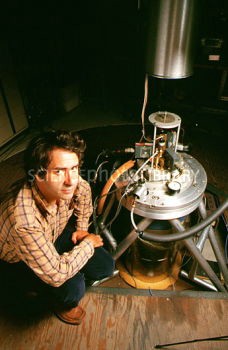
Blas Cabrera had built a very simple but effective setup that consisted of 8 coils of copper wire hooked to a computer. If a normal magnet went through the coil, The signal would first point one way, and then as the magnet exited the coil it would point the other way. However if a monopole went through the coil, we would see a deflection on only one side of the setup.
It was not the most precise of setups. Occasionally one or two rings showed a reading from stray currents. But all 8 would have to point in one direction and one direction only for the particle passing through to be a monopole.
On 14th February 1982, Cabrera did not check the machine. When he returned on 15th, he found that he had a signal! all 8 coils had registered a magnetic pole and the signal was only in one direction!
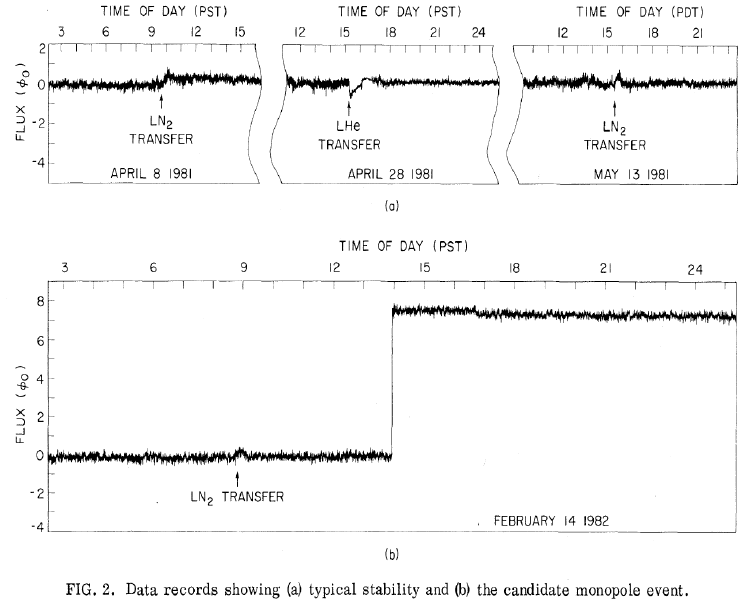
The discovery caused a huge uproar. Several more expensive, precise devices were built but a second monopole was never detected. As a quip goes, There might have been only one monopole in our region of the universe and Blas Cabrera might have detected it. However science requires something to be reproducible to be considered fact, and Weinberg even wrote to Cabrera:
Roses are red,
Violets are blue,
Its time for Monopole
Number TWO!
The result of the ‘Valentine’s day monopole’ were never reproduced.
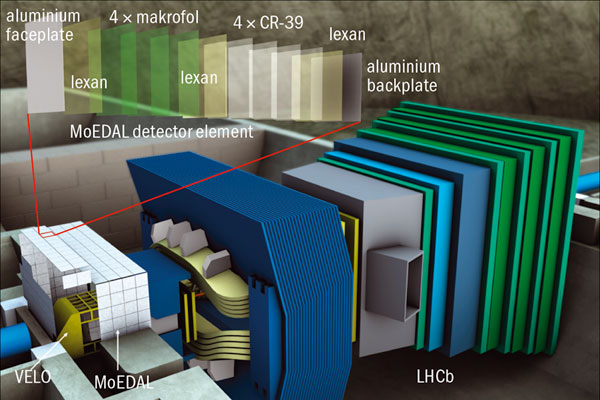
Currently we have many facilities worldwide dedicated to the search of monopoles. The most famous one being CERNs MoEDAL (pronounced medal) Monopole and Exotics detector. GUT monopoles may not be possible to find, but there are some predictions from alternate theories such as ‘t Hooft and Polyakov Monopoles that should be detectable if the LHC produces them during the course of its run. It consists of a complicated system of sheets of plastic and 600 kg of Aluminum bars that can hopefully trap a single monopole if it passes through and we will be able to study it.
The search for monopoles continues!
Thanks for reading 🙂
Further reading:
1.) https://en.wikipedia.org/wiki/Magnetic_monopole#Searches_for_magnetic_monopoles
2.) https://physicstoday.scitation.org/doi/pdf/10.1063/PT.3.3328
3.) https://www.quora.com/What-is-Noethers-theorem-stated-for-the-layman
4.) https://en.wikipedia.org/wiki/Magnetic_monopole
5.) https://www.reddit.com/r/askscience/comments/5wy3zi/what_would_be_the_implications_if_the_existence/
